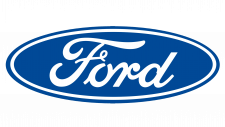Chevrolet Logo
Currently, Chevrolet, a division of General Motors Company, engages in the design, manufacturing, and selling of cars, trucks, and automotive parts. It’s a globally recognized brand, with a strong presence in North America, China, and Brazil, amongst other markets. General Motors, its parent company, holds ownership and guides its strategic direction. Chevrolet focuses on producing a versatile range of vehicles, from electric cars to SUVs and trucks, catering to a broad spectrum of consumers and continually innovating to meet evolving market demands.
Meaning and history
Founded in 1911 by Louis Chevrolet and William C. Durant, Chevrolet, colloquially known as Chevy, swiftly emerged as a significant player in the automotive industry. Initially independent, Chevrolet was merged into General Motors Company in 1918, under Durant’s leadership, marking the beginning of its long-standing association with GM.
Throughout its rich history, Chevrolet has witnessed profound transformations, evolving its manufacturing processes and vehicle lineup. It’s well-known for innovations in engineering and design, as well as for its contribution to motor racing.
Ownership transitions mainly occurred within the overarching structure of GM, impacting Chevrolet’s operational strategies and product development. Post World War II, Chevrolet became synonymous with reliability and value, contributing substantially to GM’s reputation.
Chevrolet has been pivotal in introducing various car models catering to diverse market segments, constantly adapting to consumer preferences and technological advancements. The brand’s enduring legacy is intertwined with GM’s journey, reflecting shared visions and mutual growth trajectories. Chevy remains an integral component of GM’s multinational operations, symbolizing resilience and continual evolution in the face of changing automotive landscapes.
1911 – 1913

The logo of Chevrolet, recognized worldwide, initiated its journey of transformation back in the early 20th century. The initial iteration was vastly different from the renowned bow tie or cross, which is synonymous with the brand today. William Durant, the brain behind the brand, was the creator of the first logo. He meticulously inscribed the company’s name and emphasized it with an underlining feature. Exhibiting a bold and black typeface, this emblem was emblematic of the company’s inaugural automobile, the Classic Six, a masterpiece crafted in collaboration with Louis Chevrolet. The period marked a revolutionary shift in automotive design, reflecting the aesthetic and functional sensibilities of the time. The boldness of the logo symbolized the resilience and robust nature of the brand in its infancy, mirroring its ambition to imprint a lasting impression in the automotive industry.
1913 – 1914
Around the middle of the 1910s, Chevrolet adopted an emblem distinguished by a cross, formulated from a rectangle and a parallelogram. This unique configuration was enveloped in a white boundary, perceived as three-dimensional owing to a multitude of lines meticulously illustrated. Within this structural interplay, the brand’s moniker was inscribed in white alphabets, and a pronounced typeface with extended serifs was the choice of the designers.
This emblem, with its geometric precision and artistic lines, manifested Chevrolet’s innovative spirit and attention to detail. The intersecting shapes, steeped in symmetry, conveyed a sense of balance and stability, reflecting the brand’s commitment to reliability and excellence. The voluminous perception of the boundary, combined with the boldness of the inscribed name, underscored the brand’s prominence and enduring legacy in the automotive landscape.
Every line and serif in the emblem was imbued with intentionality, creating a harmonious amalgamation of design elements. The choice of white for both the frame and the letters conveyed purity and sophistication, symbolizing Chevrolet’s unwavering standards of quality and integrity. The bold and elongated serifs further enhanced the visual appeal, making the logo a timeless representation of the brand’s ethos.
This emblem became a silent communicator of Chevrolet’s values and aspirations, a visual symphony of geometry and typography, speaking volumes about the brand’s journey and its relentless pursuit of automotive perfection. It stood as a beacon of Chevrolet’s innovative essence, a blend of artistic expression and geometric finesse, resonating with the spectators and imprinting the brand’s identity in their minds with its understated elegance and distinctive charm.
1914 – 1934
1914 marked the inception of the iconic bow tie legacy. This emblem, infused with symbolic associations, is reminiscent of a cross, a plus symbol, or potentially an infinity sign. It’s bathed in a subtle hue of blue as its primary color. The brand’s designation is emblazoned in a bold, white typeface, strategically placed at the cross’s horizontal axis. White striations underline the brand nomenclature both above and below, providing a delicate balance. A golden contour encapsulates the bow tie, text, and linear elements, imparting a voluminous and multi-dimensional appearance to the emblem. Additionally, a well-defined white boundary is discernible within the cross’s confines.
This emblematic creation was conceived to commemorate the unveiling of the Chevrolet brand’s distinguished models: the H and L series. The integrity of this design remained untouched for two decades, imbuing the brand with an aura of elegance and distinctiveness. This meticulously crafted logo, with its intricate detailing and thoughtful color palette, not only resonated with the brand’s pioneering spirit but also became a visual metaphor for its enduring values and relentless pursuit of excellence. The harmonious interplay between the color elements and the geometric symbolism reinforced the brand’s identity, ensuring its memorable impact across diverse platforms. The enduring nature of this logo is a testament to Chevrolet’s commitment to timeless elegance and innovative design, reflecting its unwavering dedication to quality and precision. The golden outline served as a subtle reminder of the brand’s premium status and its relentless pursuit of perfection in the automotive domain. The cumulative effect of these design elements manifested in a logo that is not merely a visual identifier but a symbol of Chevrolet’s rich heritage and its visionary approach to automotive excellence.
1934 – 1940
In 1934, a pivotal year, Chevrolet elected to undergo a substantial stylistic metamorphosis. The previously existent soft blue shade was displaced, making way for a more profound black. While the text broadened, its color preserved its original white. The corporate entity maintained the white linear designs and the internal detailing, albeit the golden embellishments were omitted. The impression of depth was ingeniously conceived through the incorporation of supplementary peripheral lines. The typeface was updated to a more contemporary style, which seamlessly adapted to the monochromatic printing common in newspapers of the time. This emblem is symbolically intertwined with attributes of bravery and resolve.
This significant alteration in style echoed a profound statement of the brand’s evolution and adaptability, mirroring the prevailing aesthetic tendencies and resonating with the discerning consumers of the era. The introduction of black infused the emblem with a sense of sophistication and strength, reinforcing the brand’s enduring commitment to resilience and innovation. The deliberate retention of white for the text and detailing served as a visual and symbolic counterbalance, encapsulating purity and trustworthiness. The elimination of gold accents marked a departure from opulence, emphasizing simplicity and focus. The meticulously crafted external lines offered a subtle three-dimensional illusion, augmenting the visual appeal of the logo. The transition to a modern font was not only a nod to contemporaneity but also a strategic move to ensure optimal legibility and impact in grayscale media publications. The ensuing design, brimming with boldness and purpose, seamlessly aligned with the brand’s values, becoming a timeless representation of Chevrolet’s unwavering spirit and ambition.
1940 – 1950
Following a six-year period of employing a monochromatic symbol, the designers opted to revisit a chromatic iteration. The blue in the logo underwent a transformation to a more intense shade. The typeface was kept consistent with the one utilized in the preceding insignia. The internal white boundary was omitted, but the golden fringe made a comeback, albeit exclusively on the exterior. The emblem forfeited its three-dimensional aspect, presenting itself in a 2D style instead. This emblem was rendered more vibrant with the intention of captivating a younger demographic.
This resurgence of color was a pivotal move in the brand’s visual journey, signifying a conscious shift to appeal to the evolving tastes and preferences of newer generations. The intensification of the blue color was not merely a design choice, but also a nuanced strategy to resonate vibrancy and freshness, essential to maintaining relevance in a competitive landscape. The retention of the previous font was a thoughtful balance between innovation and continuity, ensuring that the brand’s legacy remained intertwined with its evolving image. The external golden accent subtly highlighted the brand’s commitment to excellence and quality, all while maintaining a sleek and modern aesthetic. The transition to a two-dimensional format was a reflection of the prevailing design trends of the time, embracing simplicity and clarity to convey the brand’s essence to a diverse and dynamic audience. The enhanced brightness and saturation of the logo were instrumental in creating a visually appealing and resonant symbol, strategically aligned with the brand’s aspiration to connect with and engage a more youthful and diverse consumer base.
1943 – 1945
Alongside the eye-catching main logo, Chevrolet employed an alternative emblem, exhibiting a drastic departure from its predecessors. The iconic cross was omitted, leaving solely the brand’s name on display. The typography underwent a total transformation, aligning with a shift to a black color scheme, and each letter was adorned with serifs, imbuing a refined elegance to the overall look. The prominent “V” was distinguished and more pronounced compared to the other elements.
This deviation from the established design represented a bold endeavor by Chevrolet to redefine its visual identity, without losing the essence of the brand’s legacy. The decision to solely feature the company’s name was a subtle nod to the importance of brand recognition in a constantly evolving market. The sophisticated alterations in the typography, especially the emphasis on the “V,” aimed to encapsulate the brand’s inherent values and its relentless pursuit of excellence. This nuanced approach to design was indicative of Chevrolet’s commitment to maintaining a dynamic and modern brand presence while upholding its foundational elements of sophistication and elegance, further enriching the multifaceted tapestry of the company’s visual communication strategy.
1950 – 1964
Chevrolet made a strategic decision to alter the principal colors of its emblem, substituting the existing blue for a vibrant shade of red. However, the cherished cross made a comeback, now rendered in pristine white. The typography was reintroduced in bold, complemented by serifs, and featured an added element of red italics. The backdrop of the emblem was conceived in an oval shape, integrated with a gray “highlight,” creating an illusion of shadow and thereby, imparting a sense of depth to the design. This comprehensive reimagining of the logo is presumed to be emblematic of the company’s accelerated expansion and elevated operational efficiency.
The transition in colors not only brought a renewed vibrancy to the logo but also marked a return to an element of nostalgia with the reintroduction of the symbolic cross, embodying a confluence of tradition and innovation. The nuanced introduction of gray highlights, resembling shadows, elevates the overall visual appeal, infusing it with a subtle interplay of light and depth. This meticulous redesign symbolically mirrors Chevrolet’s trajectory of swift advancements and remarkable productivity levels. The modifications in typography and the incorporation of red italics signify an amalgamation of boldness and elegance, reflecting the brand’s evolving identity and its commitment to maintaining a harmonious balance between its rich heritage and its pursuit of modernity.
1964 – 1976
During the 1960s, the United States experienced the advent of a fresh stylistic wave known as minimalism. This contemporary movement left a considerable impact on various aspects of design, including corporate logos. In alignment with this trend, Chevrolet opted to omit the vibrant hues from its emblem, preserving merely a white cross complemented by italicized text in black. The typographic elements underwent a substantial transformation, adopting a more contemporary and bold aesthetic, and the interspacing of the letters was condensed. The logo was enveloped by a sleek black border. Consequently, the insignia forfeited its three-dimensional aspect.
This transition marked by the 1960s not only represents a shift in the aesthetic preferences in the United States but also illustrates Chevrolet’s adaptive nature and its inclination towards contemporaneity and subtlety in design. The embracement of minimalistic elements like the singular white cross and the refined black italic text symbolizes the brand’s willingness to evolve and to align its visual identity with the prevailing design philosophies. The enhancements in font boldness and the reduction in letter spacing further echo the prevailing design sentiments of the era, encapsulated within a slender, refined black contour. These refinements symbolize Chevrolet’s ongoing pursuit of modernization, stripping down its emblem to its essential elements, thus, embodying a more streamlined and sophisticated brand image.
1976 – 1988
Between 1976 and 1988, Chevrolet marked a significant milestone by manufacturing 2.8 million units of the Chevette model, achieving the status of the top-selling automobile during 1979-1980. This period of unparalleled achievement was also a phase of transformation for the company’s emblem, witnessing a revival of the gradient blue hue. There was a comprehensive alteration in the textual element, affecting not just the typeface but also the dimensions of the letters. The introduction of a white stripe and a gray silhouette became noticeable elements, lending a three-dimensional aspect to the design.
This span in the company’s history is not just a testament to its superior manufacturing capabilities and market leadership but also reflects its dynamic approach to brand representation. The rejuvenation of the blue gradient brought a fresh vibrancy to the logo, complementing the all-encompassing modifications made to the textual components, encompassing changes in both the font style and letter scaling. The incorporation of a subtle white delineation and a shadowy gray contour enhanced the logo’s visual depth, offering an illustrative representation of the brand’s ongoing evolution and its commitment to aligning its identity with contemporary design paradigms.
1988 – 2002
Opting for a less-is-more approach, the logo from this era is marked by a simplification of elements and a pronounced use of color. Post-1988, the company’s moniker has been strategically positioned outside the iconic bow tie, a deviation that the brand has firmly adhered to, leaving its earlier versions behind. The cruciform element of the logo flaunts a pristine white, encased within a border of profound blue, while the inscribed text is rendered in shades of red. Notably, the textual representation of the company’s name overshadows the renowned bow tie in terms of dimensions.
Within this timeframe, the visual identity of the company evolved to embrace a minimalist yet colorful aesthetic, emphasizing clarity and vividness. This metamorphosis is evident in the strategic repositioning of the company’s name, which now occupies a space beyond the signature bow tie, marking a decisive break from its historical renditions. The cross within the logo is immaculate, ensconced in a deep blue perimeter, with the accompanying text in contrasting reddish tones. This placement accentuates the company’s name, making it more prominent compared to the universally recognized bow tie, symbolizing a modern approach to brand visualization and a commitment to progressive design philosophies.
1994 – 2001
In this era, the organization unveiled a renewed generation of Chevrolet Lumina, which had a consequential impact on the brand’s symbolic representation. The badge underwent a transformation, adopting a more luminous and metallic sheen. The inscription “Genuine Chevrolet” was integrated, formally incorporating the company’s designation. The cross’s hue was a concoction of blue, black, and white elements, merging seamlessly. The contours bestowed enhanced depth and luster to the emblem.
During this developmental phase, the inception of a revitalized Chevrolet Lumina model played a pivotal role in shaping the visual identity of the brand. The transformative effects were visible in the emblem, which emerged with enhanced brightness and a reflective chrome finish, embodying a sense of modernity and elegance. The inclusion of the phrase “Genuine Chevrolet” served as a formal acknowledgment, reinforcing the brand’s authenticity and heritage. The chromatic composition of the cross was intricate, involving an amalgamation of blue, black, and white strokes, crafting a cohesive visual impact. The elaborative framing elevated the emblem’s aesthetic appeal by introducing an additional layer of depth and radiance, reflecting the brand’s commitment to innovation and excellence in design, and aligning its visual narrative with the evolved product line.
2001 – 2002
The emblem employed for a solitary year stood out distinctly, diverging significantly from its predecessors. It uniquely featured the renowned cross, omitting the company’s name from the design, emphasizing a minimalist yet bold approach. The surround of the logo was infused with a vibrant, overflowing red hue, bestowing an added sense of dimensionality to the piece. This design exuded a contemporary and revitalized vibe.
In this brief yet transformative phase, the company embraced an innovative aesthetic, signifying a departure from tradition and a stride towards modernity and simplicity. This singular emblematic approach aimed to emphasize the iconicity of the cross, allowing it to communicate the brand’s values and identity independently, without the reinforcement of the company’s name. The radiant and overflowing shades of red incorporated into the framing endowed the emblem with an invigorated and dynamic character, contrasting vividly with the simplified internal elements, creating a harmonious balance between vibrancy and minimalism. The resulting aesthetic was a breath of fresh air, reflecting a forward-thinking and refreshed brand image, resonating with modern sensibilities while maintaining a connection to its iconic roots. The unprecedented freshness and modernity in the design rendered it a noteworthy chapter in the logo’s evolutionary journey, encapsulating the essence of transformation and contemporary appeal.
2002 – Today
The 2002 iteration of Chevrolet’s emblem is arguably the most identifiable amongst its numerous redesigns. This logotype, rendered in black and conceived with sleek, robust contours, features a unique typeface where several letters are fused, exuding a sense of sophistication and versatility. It effortlessly stands out against diverse backdrops and is prominently displayed in metallic finish on the brand’s vehicles, as well as in stark black on promotional posters and various print mediums. This embodiment of the brand not only accentuates the aesthetic appeal but also serves as a versatile branding element, adapting to numerous visual contexts and maintaining its elegance and recognizability, reflecting Chevrolet’s enduring identity and its adaptability to various branding needs and environments. This version seems to merge modern aesthetics with functional simplicity, offering a sleek yet bold representation of the brand’s identity. It’s a versatile visual element that, while maintaining a consistent brand image, adapts its elegance to a multitude of mediums, ensuring the brand’s presence is felt whether in print, on metal, or in any other form, making it a timeless piece in Chevrolet’s evolutionary branding journey.
2002 – 2010
Starting from 2002, the narrative of the eminent golden butterfly commenced, marking a pivotal chapter in the visual evolution of the brand. This emblem, saturated in radiant golden hues with a matte texture, became a powerful symbol of the corporation’s vigor and robustness, highlighting its distinguished and venerable stature. Notably, the company’s moniker is absent, allowing the symbol to convey its message purely through its aesthetic essence. The border of the icon adopts a grey chrome hue, adding a layer of depth to the insignia and enhancing its three-dimensional appearance.
This icon’s inception marked a period where visual representation was paramount, intertwining prestige with the enduring strength to form a connection between the brand and its discerning consumers. It resonates with an aura of elegance and reverence, representing a silent but impactful acknowledgment of the brand’s lasting legacy and its steadfast pursuit of innovation and excellence. The absence of textual elements signifies a bold step towards universal recognition, where the emblem itself becomes a silent ambassador of the brand’s values and aspirations. The combination of golden matte and grey chrome embodies a harmonious blend of tradition and modernity, reflecting the brand’s journey through time and its unwavering commitment to surpassing excellence. This notable transformation in logo design reflects a sophisticated approach to branding, emphasizing subtlety and understated elegance, while maintaining a strong and recognizable presence in the competitive landscape.
2010 – 2013
In 2010, Chevrolet commemorated a century of innovation and excellence, epitomized by a logo that impeccably mirrors the brand’s majestic legacy. While the overarching concept faithfully retains its roots from earlier versions, subtle modifications have infused fresh dynamism into the design. The inclusion of the company name marks its resurgence in the emblem, complemented by marginally expanded bezels. The inscription employs a pronounced, bold typeface rendered in stark black, with each character distinctly articulated. Within the iconic cross, a subtle grid pattern emerges, juxtaposed against a golden backdrop, adding a layer of intricacy and richness to the visual representation. This design choice, while reminiscent of the brand’s storied past, reflects a commitment to elegance and a nuanced approach to branding, balancing heritage with modernity and forging a connection with a diverse audience, presenting the illustrious history and timeless values of Chevrolet with renewed vigor and refined aesthetics. The amalgamation of these elements results in a symbol that is not only a nod to the brand’s rich heritage but also a representation of its continuous evolution and unwavering commitment to quality and excellence.
2013 – Today
The contemporary logo, golden with a silver border, is a symbol of elegance and modernity. The subtle tilt and the division of the cross into glossy and matte sections are indicative of Chevrolet’s innovative approach to design. The new gray font and the interconnected letters reflect the brand’s modern outlook and its commitment to evolving its visual identity, maintaining its iconic status in the automotive industry while adapting to the contemporary design landscape.
The expansive journey of Chevrolet’s logo is a testament to the brand’s enduring legacy and its unwavering commitment to innovation, design excellence, and adaptability, mirroring its evolution in sync with the changing times, consumer preferences, and design philosophies.


























